Flux analysis of cholesterol biosynthesis in vivo reveals multiple tissue and cell-type specific pathways
- PMID: 26114596
- PMCID: PMC4501332
- DOI: 10.7554/eLife.07999
Flux analysis of cholesterol biosynthesis in vivo reveals multiple tissue and cell-type specific pathways
Abstract
Two parallel pathways produce cholesterol: the Bloch and Kandutsch-Russell pathways. Here we used stable isotope labeling and isotopomer analysis to trace sterol flux through the two pathways in mice. Surprisingly, no tissue used the canonical K-R pathway. Rather, a hybrid pathway was identified that we call the modified K-R (MK-R) pathway. Proportional flux through the Bloch pathway varied from 8% in preputial gland to 97% in testes, and the tissue-specificity observed in vivo was retained in cultured cells. The distribution of sterol isotopomers in plasma mirrored that of liver. Sterol depletion in cultured cells increased flux through the Bloch pathway, whereas overexpression of 24-dehydrocholesterol reductase (DHCR24) enhanced usage of the MK-R pathway. Thus, relative use of the Bloch and MK-R pathways is highly variable, tissue-specific, flux dependent, and epigenetically fixed. Maintenance of two interdigitated pathways permits production of diverse bioactive sterols that can be regulated independently of cholesterol.
Keywords: biochemistry; cholesterol metabolism; deuterium; isotopomer; mass spectrometry; mouse; stable isotope.
Conflict of interest statement
HHH: Reviewing editor,
The other authors declare that no competing interests exist.
Figures
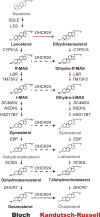
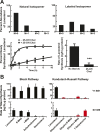

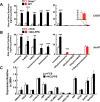
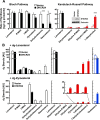

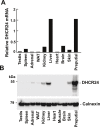


References
Publication types
MeSH terms
Substances
Grants and funding
LinkOut - more resources
Full Text Sources
Other Literature Sources
Medical
Molecular Biology Databases
Miscellaneous

